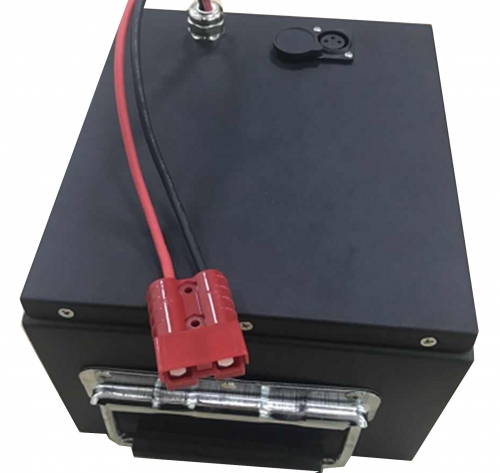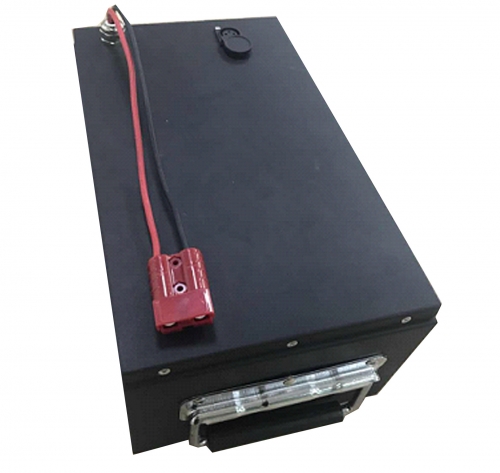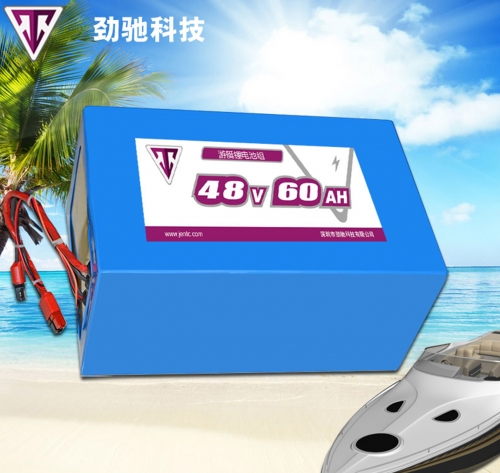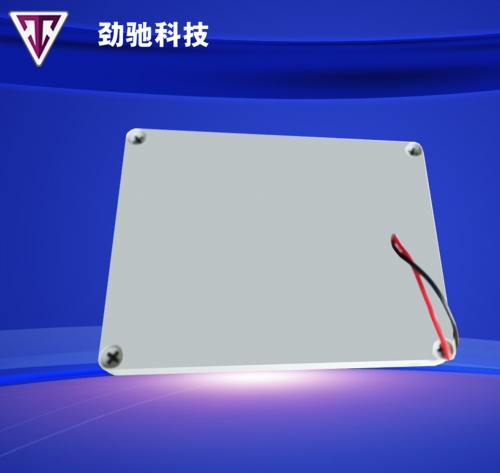1. Types of Customized Lithium Batteries:
The secondary batteries currently used in the market are mainly nickel-metal hydride (Ni-MH) and lithium-ion (Li-ion). The customized lithium batteries that have been mass-produced are liquid lithium-ion batteries (LiB) and polymer lithium-ion batteries (LiP). So in many cases, if the battery is marked with Li-ion, it must be a lithium-ion battery. But it is not necessarily a liquid lithium-ion battery, it may also be a polymer lithium-ion battery. Lithium-ion batteries are an improved product of lithium batteries. Lithium batteries have been around for a long time, but lithium is a highly active metal (remember its position in the periodic table?), which often burns and explodes when charging. Later, improved lithium-ion batteries were added with ingredients that can inhibit the activity of lithium elements (such as cobalt, manganese, etc.), and the old lithium batteries were basically eliminated. As for how to distinguish them, you can identify them from the battery logo. Lithium batteries are Li and lithium-ion batteries are Li-ion. Now, the so-called "lithium batteries" used in laptops and mobile phones are actually lithium-ion batteries. The basic structure of modern batteries includes three elements: positive electrode, negative electrode and electrolyte. As a type of battery, lithium-ion batteries also have these three elements. Generally, lithium-ion technology uses liquid or inorganic colloidal electrolytes, so a strong shell is required to contain the flammable components, which increases the weight and cost of the battery and limits the flexibility of size and shape. Generally speaking, the thickness of liquid lithium-ion secondary batteries is 6mm, and it is difficult to reduce it further. The so-called polymer lithium-ion battery is a battery system that uses polymer materials as its main battery system in at least one or more of the three main structures. The new generation of polymer lithium-ion batteries has a high degree of polymerization, so the shape can be thin, arbitrary area and arbitrary shape, which greatly improves the flexibility of battery design, so that it can be made into batteries of any shape and capacity in accordance with product requirements. Its capacity, charge and discharge characteristics, operating temperature range, cycle life and environmental performance are greatly improved compared with lithium-ion batteries. The liquid lithium-ion batteries currently sold on the market are prone to rupture and fire in the case of overcharging, which is very dangerous, so a protection IC circuit is installed to ensure that the battery will not be overcharged. As for high-molecular polymer lithium-ion batteries, this type of battery has better charge and discharge resistance than liquid lithium-ion batteries, so the requirements for external protection IC circuits can be appropriately relaxed. In addition, in terms of charging, polymer lithium-ion batteries can be charged using IC constant current, which can shorten a lot of waiting time compared with the time required for CCCV (Constant Currert-Constant Voltage) charging method used by lithium-ion secondary batteries.
2. Use of Customized Lithium Batteries
1. The charging and discharging characteristics of lithium batteries and nickel batteries are very different, and I can tell you very clearly that all the serious formal technical information I have consulted emphasizes that overcharging and over-discharging will cause great damage to lithium batteries, especially liquid lithium-ion batteries. Therefore, charging should be carried out according to standard time and standard methods, especially not for over-long charging of more than 12 hours. Usually, the charging method described in the mobile phone manual is the standard charging method suitable for the mobile phone. In addition, mobile phones or chargers with lithium batteries will automatically stop charging after the battery is fully charged. There is no so-called "trickle" charging that lasts for more than 10 hours like nickel battery chargers. In other words, if your lithium battery is fully charged, it is useless to put it on the charger. And none of us can guarantee the characteristic changes and quality of the battery's charge and discharge protection circuit, so your battery will be on the edge of danger for a long time. This is another reason why we oppose long charging. In addition, on some mobile phones, if the charger is not removed after charging for more than a certain period of time, the system will not only not stop charging, but will also start a discharge-charge cycle. Perhaps the manufacturer has its own purpose for this practice, but it is obviously not good for the life of the battery and the mobile phone/charger. At the same time, long charging takes a long time and often needs to be done at night. Judging from the situation of my country's power grid, the voltage at night in many places is relatively high and fluctuates greatly. As mentioned earlier, lithium batteries are very delicate, and their ability to withstand fluctuations in charge and discharge is much worse than that of nickel batteries, so this brings additional dangers. In addition, another aspect that cannot be ignored is that lithium batteries are also not suitable for over-discharge, which is also very bad for lithium batteries. This leads to the following question.
2. When should charging start during normal use? In our forum, we often see this statement that because the number of charge and discharge times is limited, the mobile phone battery should be used up as much as possible before charging. However, the editor found an experimental table on the charge and discharge cycle of lithium-ion batteries, and the data on the cycle life are listed as follows: Cycle life (10%DOD):>1000 times Cycle life (100%DOD):>200 times Where DOD is the abbreviation for discharge. As can be seen from the table, the number of recharges is related to discharge, and the cycle life at 10%DOD is much longer than that at 100%DOD. Of course, if converted to the actual relative total capacity of charging: 10%*1000=100, 100%*200=200, the latter is still better for full charge and discharge, but the previous netizen's statement needs some corrections: Under normal circumstances, you should charge according to the principle of using up the remaining battery power, but if your battery is not expected to last the whole day of the next day, you should start charging in time. Of course, if you are willing to carry the charger to the office, it is another matter. When you need to charge to cope with the upcoming important events that are expected to cause busy communications, even if the battery still has a lot of remaining power, you can just charge in advance, because you have not lost "1" charging cycle life, that is, "0.x" times, and this x is often very small. A saying that is as widely circulated as long charging is "try to use up the battery of the mobile phone as much as possible until it automatically shuts down." This practice is actually only practiced on nickel batteries, the purpose is to avoid the memory effect. There was an example of someone who continued to use the mobile phone without charging it after the warning of low battery power appeared, and used it until it automatically shut down. As a result, the phone in this example did not respond during subsequent charging and startup, and had to be sent to customer service for repair. This is actually because the battery voltage is too low due to excessive discharge, so it is not suitable for normal charging and startup.
1. Overview of the characteristics of polymer lithium-ion batteries
According to the different electrolyte materials used in lithium-ion batteries, lithium-ion batteries can be divided into two categories: liquid lithium-ion batteries (lithium ion batteries, referred to as LIB) and polymer lithium-ion batteries (polymer lithium ion batteries, referred to as LIP). The positive and negative electrode materials used in polymer lithium-ion batteries are the same as those of liquid lithium ions, and the working principles of the batteries are basically the same. The main difference between them lies in the electrolyte. Lithium-ion batteries use liquid electrolytes, while polymer lithium-ion batteries use solid polymer electrolytes instead. This polymer can be "dry" or "colloidal". Currently, most of them use polymer colloidal electrolytes.
Polymer lithium-ion batteries can be divided into three categories:
(1) Solid polymer electrolyte lithium-ion battery. The electrolyte is a mixture of polymer and salt. This battery has low ionic conductivity at room temperature and is suitable for high temperature use.
(2) Gel polymer electrolyte lithium-ion battery. That is, adding additives such as plasticizers to solid polymer electrolytes to improve ion conductivity and enable the battery to be used at room temperature.
(3) Lithium-ion battery with polymer positive electrode material. Conductive polymer is used as the positive electrode material, and its ratio is 3 times that of existing lithium-ion batteries, which is a new generation of lithium-ion batteries. Since solid electrolytes are used instead of liquid electrolytes, polymer lithium-ion batteries have the advantages of being thinner, with any area and shape, compared with liquid lithium-ion batteries, and will not cause problems such as leakage and combustion and explosion. Therefore, aluminum-plastic composite films can be used to make battery shells, thereby increasing the specific capacity of the entire battery; polymer lithium-ion batteries can also use polymers as positive electrode materials, and their mass ratio will be increased by more than 50% compared with current liquid lithium-ion batteries. In addition, polymer lithium-ion batteries are better than lithium-ion batteries in terms of operating voltage, charge and discharge cycle life, etc. Based on the above advantages, polymer lithium-ion batteries are hailed as the next generation of lithium-ion batteries.
Polymer lithium-ion battery
The difference between polymer lithium-ion batteries and ordinary batteries lies in the electrolyte. In the design of the 1970s, solid polymer electrolytes were used. This type of electrolyte is similar to a plastic film that cannot conduct electrons but allows ion exchange (atoms or groups of atoms that can be charged). The polymer electrolyte replaces the traditional porous diaphragm soaked in electrolyte. The design of dry polymer electrolytes allows for simplified assembly, improved mechanical strength of the battery, and can be manufactured into ultra-thin geometries. The thickness of a single cell can be as thin as 1 mm. Device designers can freely design the shape and size of the battery according to their imagination. Unfortunately, solid polymer lithium-ion batteries are limited by their poor conductivity. The internal resistance is too high to provide the high pulse currents required by current communication devices and cannot drive the hard drive of a laptop computer. Heating the battery to 60°C will cause the battery to freeze and then heat up.Celsius, the conductivity increases rapidly, but such requirements are not suitable for use in portable devices. As a compromise, some gel electrolytes were introduced.
Most of the mobile phone polymer lithium-ion batteries currently sold on the market are hybrid batteries that contain gel electrolytes. Lithium-ion polymers are used to modify this system to become polymer power sources currently used in portable devices. After adding gel electrolytes, what is the difference between lithium-ion polymer batteries and ordinary lithium-ion batteries? Although the two batteries are very similar in performance, lithium-ion polymers replace porous separators as solid electrolytes. Gel electrolytes only increase ion conductivity. Polymer lithium-ion batteries have not become as popular as some analysts predicted. Its superiority and low manufacturing costs have not yet been realized. In fact, the capacity is slightly less than that of a standard lithium-ion battery. The market for polymer lithium-ion batteries is in applications with ultra-thin geometry power supplies, such as credit card power supplies and the like.
Advantages:
Ultra-thin, the battery can be assembled into a credit card
Flexible form factor: Manufacturers are not limited to standard form factors and can economically make them the right size.
Lightweight: Batteries using polymer electrolytes do not require metal shells as protective outer packaging. Overcharge is more stable and the probability of electrolyte leakage is lower.
Limitations:
Compared with lithium-ion batteries, the density and number of cycles are both reduced.
Expensive to manufacture.
No standard form factor, most batteries are made for the high-capacity consumer market.
Compared to custom lithium batteries, the price is relatively high.











